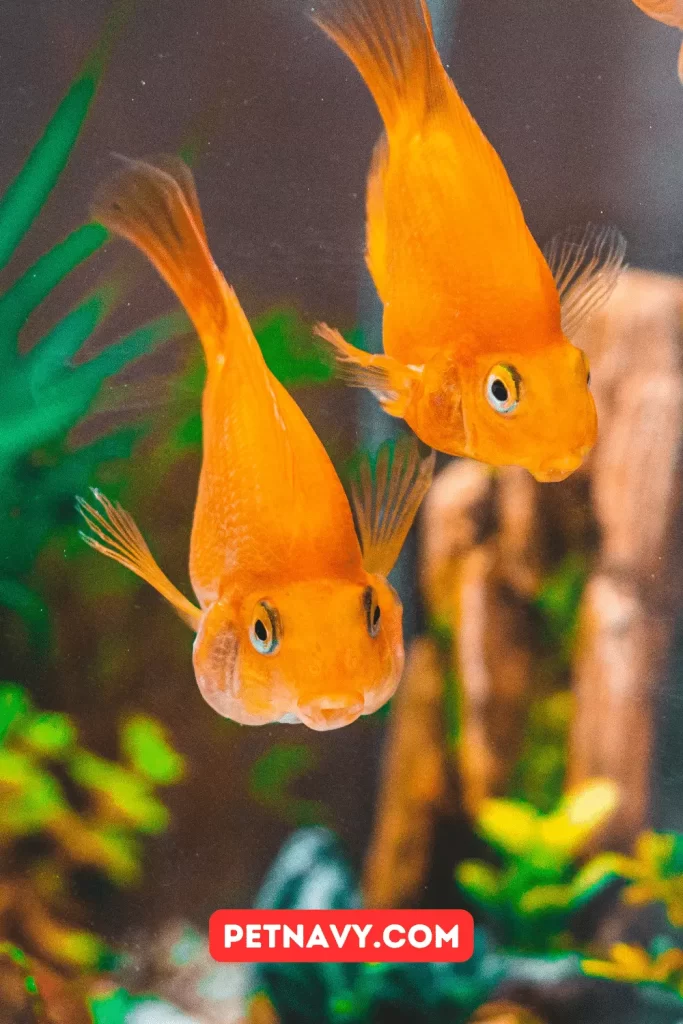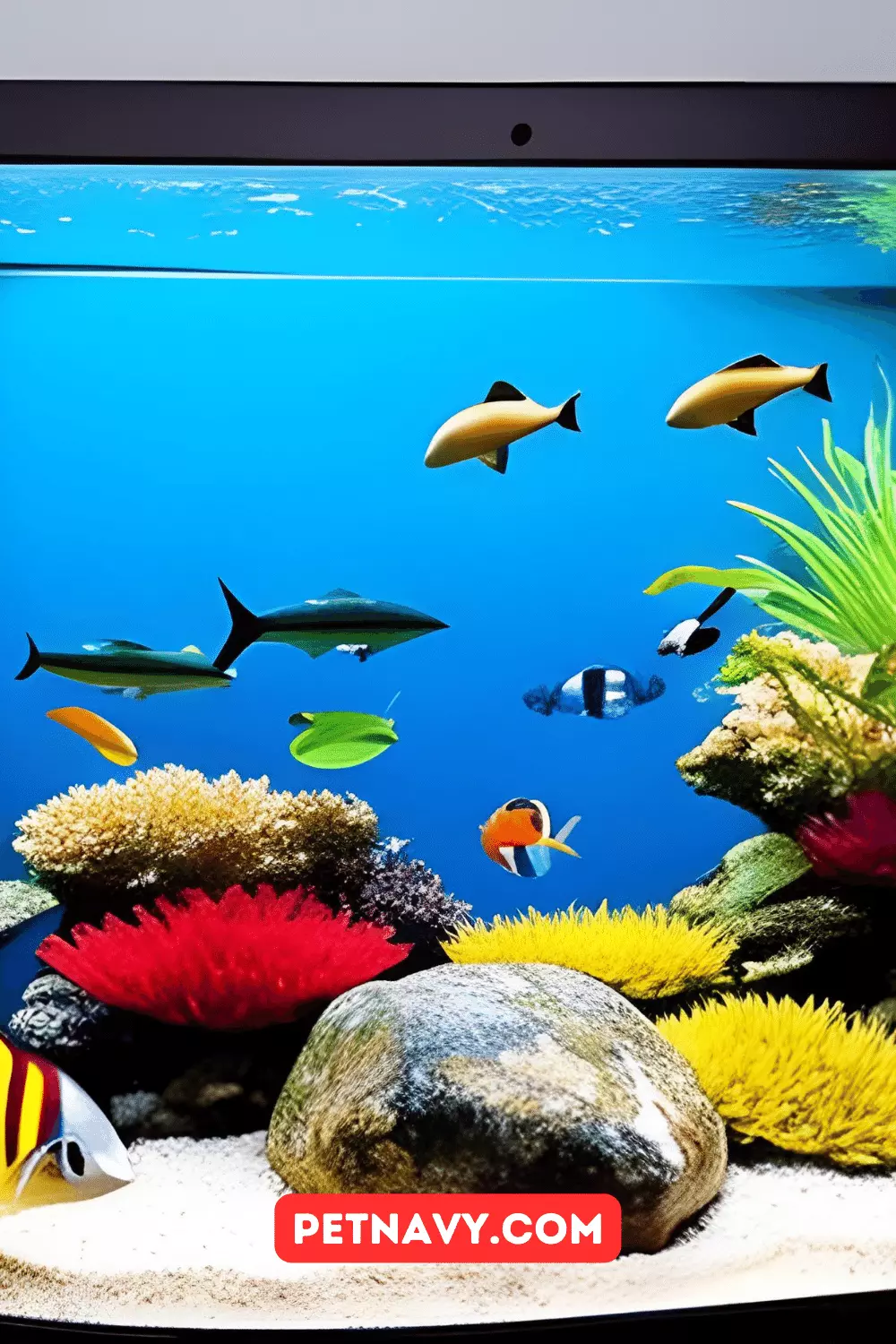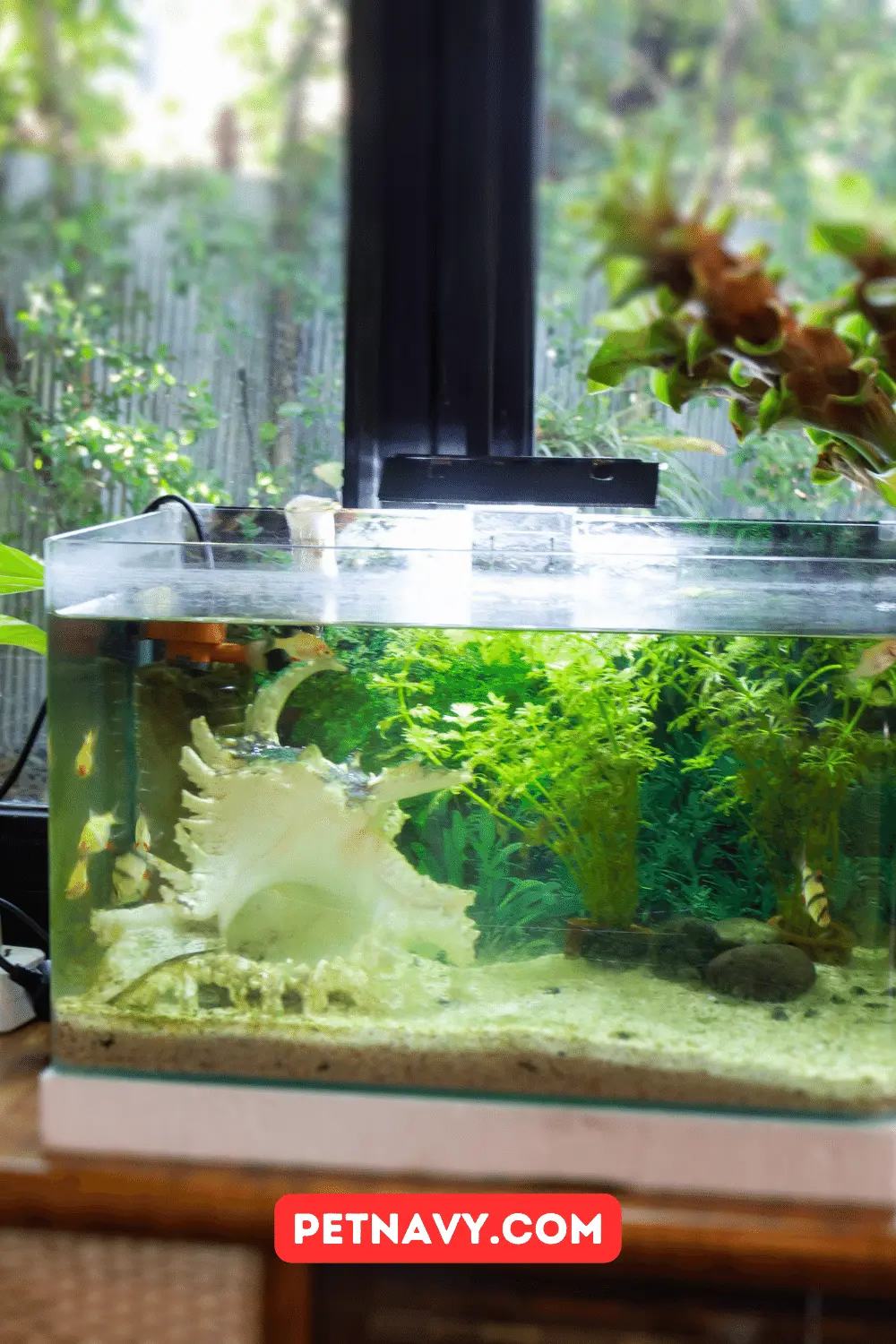Fish Tank Filter: Easy Step-by-Step Guide For Cleaning
Learn how to clean your fish tank filter with our easy step-by-step guide. Keep your underwater friends happy and healthy! 🐟🌊 #FishTankFilter #HealthyAquarium
Fishkeeping is a rewarding hobby that brings a slice of the underwater world right into our homes.
However, like all pets, fish require a clean and healthy environment to thrive. One of the most crucial components ensuring this is the fish tank filter.
Over time, the filter accumulates debris and needs regular cleaning to function optimally.
In this guide, we’ll delve deep into the steps and tips for cleaning your fish tank filter, ensuring your aquatic friends remain happy and healthy.
Table of Contents
Why is Cleaning Your Fish Tank Filter Essential?
Before we dive into the steps, it’s crucial to understand the importance of a clean filter. The filter plays a pivotal role in maintaining the water’s quality by removing debris, excess food, and waste. A clogged or dirty filter can’t perform efficiently, leading to a buildup of harmful toxins that can jeopardize your fish’s health.
Fishkeeping is not just about the aesthetic appeal of a beautifully decorated aquarium or the mesmerizing dance of colorful fish. At its core, it’s about ensuring a healthy environment for your aquatic pets. One of the cornerstones of this environment is the fish tank filter. But why is it so crucial to keep this filter clean? Let’s dive deeper into the significance of a pristine fish tank filter.
The Role of the Fish Tank Filter
At a glance, the filter might seem like a simple device that just circulates water. However, its role is much more profound. The fish tank filter is responsible for three primary types of filtration:
- Mechanical Filtration: This is where the filter physically traps particles, debris, and excess food that float in the water. Over time, these particles can accumulate, leading to a murky appearance and potentially harming the fish.
- Biological Filtration: Beneficial bacteria reside in the filter media. These bacteria break down harmful ammonia produced by fish waste into less harmful substances. This biological process is vital for maintaining a balanced and safe environment for the fish.
- Chemical Filtration: Some filters are equipped with activated carbon or other materials that remove impurities and odors from the water, ensuring it remains clear and fresh.
The Consequences of a Neglected Filter
When the filter is neglected, several issues can arise:
- Reduced Efficiency: As debris accumulates, the filter’s efficiency in circulating and cleaning water diminishes. This reduced flow can lead to stagnant areas in the tank, promoting the growth of harmful algae and bacteria.
- Buildup of Toxins: A dirty filter struggles to break down harmful substances efficiently. This inefficiency can lead to a buildup of toxins like ammonia, which is detrimental to fish health.
- Stressful Environment: Fish are sensitive creatures. A dirty environment, characterized by murky water and fluctuating water parameters, can stress them, making them more susceptible to diseases.
The Domino Effect of a Dirty Filter
A clogged or dirty filter doesn’t just affect water clarity; it sets off a domino effect. The reduced efficiency in breaking down waste can lead to an imbalance in the tank’s ecosystem. This imbalance can then promote the growth of harmful microorganisms, further jeopardizing the health of the fish.
Moreover, a stressed fish with a weakened immune system becomes an easy target for diseases. Once one fish falls ill, it can quickly spread to other tank inhabitants, leading to a potential tank-wide epidemic.
The fish tank filter, often running silently in the background, is the unsung hero of a thriving aquarium. Its role in maintaining water quality is paramount. By ensuring it’s clean and functioning optimally, you’re not just ensuring clear water but also a balanced, healthy environment for your fish.
In the world of fishkeeping, prevention is always better than cure. Regular maintenance and cleaning of the fish tank filter can prevent many potential issues, ensuring your aquatic pets live in a stress-free and healthy environment. So, the next time you admire your fish swimming gracefully, spare a thought for the filter and ensure it gets the care it deserves.
Step-by-Step Guide to Cleaning Your Fish Tank Filter

1. Turn Off the Filter: Safety first! Before you start the cleaning process, ensure the filter is turned off. This step is crucial to avoid any potential electrical hazards and to ensure you can handle the filter without any complications.
2. Remove the Filter: With the filter turned off, carefully extract it from the tank. Handle it gently to avoid causing any damage or spilling its contents.
3. Disassemble the Filter: Filters come in various designs and models. Depending on your filter type, you may need to disassemble it to access all its components. This step ensures that every part gets the thorough cleaning it requires.
4. Clean the Filter Media:
- The filter media, whether it’s sponge, ceramic rings, or activated carbon, traps debris and houses beneficial bacteria. When cleaning, always use tank water to rinse the media. This practice helps preserve the essential bacteria that aid in breaking down waste.
- A vital tip: Never use tap water to clean the filter media. Tap water often contains chlorine, which can kill the beneficial bacteria, disrupting the tank’s ecological balance.
5. Clean the Impeller: The impeller, often overlooked, is a vital component of the filter. It’s responsible for the filter’s operation, ensuring water flows through it. Over time, the impeller can get clogged with debris. Ensure it’s clean, functioning, and free from any obstructions.
6. Reassemble and Restart: With all components cleaned, it’s time to put the filter back together. Reassemble it according to the manufacturer’s instructions. Once done, place the filter back in the tank and turn it on. Ensure it’s working efficiently and that water flows through it smoothly.
Pro Tips for Maintaining a Sparkling Clean Filter
- Cleaning Frequency: While it’s essential to clean your filter, how often should you do it? Ideally, every 2-4 weeks. However, this frequency can vary based on the filter type, tank size, and the number of fish you have. Always monitor the filter’s performance and the water’s clarity as indicators.
- Preserving Beneficial Bacteria: The beneficial bacteria in your tank play a pivotal role in maintaining a balanced environment. They help break down waste, converting harmful toxins into less harmful substances. Always prioritize their preservation. Using tank water for cleaning and avoiding chemicals ensures these bacteria remain unharmed.
- Manufacturer’s Instructions: Each filter model can have its unique quirks and requirements. Always keep the manufacturer’s instructions handy. They provide valuable insights into the filter’s maintenance and cleaning.
- Replace Filter Media Periodically: Over time, filter media can degrade and lose its efficiency. While cleaning helps, it’s also essential to replace the media as recommended by the manufacturer. This replacement ensures the filter continues to trap debris effectively.
- Monitor Water Quality: A filter’s primary role is to maintain water quality. Regularly test your tank’s water for parameters like ammonia, nitrites, and nitrates. If you notice any spikes or imbalances, it might indicate a filter issue.
FAQs on Fish Tank Filter Maintenance and More

How should I clean my fish tank filter?
To clean your fish tank filter, first turn off and unplug the filter. Remove the filter media and rinse it gently in a bucket of tank water to remove debris. Clean the filter housing with a soft brush or cloth, ensuring not to scrub too hard to avoid damaging it. Reassemble the filter and plug it back in.
How often should I clean my fish tank filter?
It’s recommended to clean your fish tank filter every 2-4 weeks. However, the frequency might vary depending on the size of the tank, the number of fish, and the type of filter you have.
Can you rinse and reuse an aquarium filter?
Yes, many aquarium filters are designed to be rinsed and reused. However, ensure you’re gentle during the cleaning process to avoid damaging the filter media.
Should I clean the inside of my fish filter?
Yes, cleaning the inside of your fish filter helps remove trapped debris and ensures optimal performance. Use a soft brush or cloth to gently clean the interior.
Can I rinse my aquarium filter with tap water?
It’s best to avoid rinsing your aquarium filter with tap water as it contains chlorine, which can kill beneficial bacteria. Instead, use tank water to rinse the filter.
How do you clean a filter without killing bacteria?
To clean a filter without killing beneficial bacteria, rinse the filter media gently in a bucket of tank water. This preserves the bacteria while removing debris.
Why does my fish tank filter get so dirty?
Fish tank filters can get dirty due to excess food, fish waste, decaying plants, and other debris. Regular maintenance and avoiding overfeeding can help reduce the buildup.
How do I get my fish tank water crystal clear?
To achieve crystal clear water, ensure regular maintenance, avoid overfeeding, use a good quality filter, and consider adding beneficial bacteria or water clarifiers if needed.
How long do fish tank water filters last?
The lifespan of a fish tank water filter varies based on its type and usage. However, with proper maintenance, most filters can last several years.
Do you leave filter on when feeding fish?
It’s best to turn off the filter during feeding to prevent food from getting sucked into it. Once feeding is done, you can turn the filter back on.
How long will fish be OK without a filter?
Fish can survive without a filter for a short period, typically a few hours to a day. However, prolonged periods without filtration can lead to a buildup of toxins and stress the fish.
What happens if you don’t clean your aquarium filter?
Neglecting to clean your aquarium filter can lead to reduced efficiency, buildup of harmful toxins, and stress on your fish, potentially leading to health issues.
What is the cleanest way to filter water?
The cleanest way to filter water is by using a combination of mechanical, chemical, and biological filtration methods.
Does boiling tap water help filter it?
Boiling tap water kills bacteria and pathogens but doesn’t remove chemicals or impurities. For a comprehensive filtration, other methods should be combined with boiling.
What is the healthiest way to filter tap water?
The healthiest way to filter tap water is by using a multi-stage filtration system that includes activated carbon, reverse osmosis, and UV sterilization to remove contaminants and ensure safe drinking water.
Final Words
Fishkeeping is more than just feeding your fish and admiring their beauty. It’s about creating and maintaining a habitat where they can thrive. A clean and efficient filter is central to this endeavor. By following the steps and tips outlined in this guide, you’ll ensure your fish enjoy a clean, healthy, and vibrant environment.
Remember, a little effort goes a long way in ensuring the well-being of your aquatic companions. Happy fishkeeping!
You may also like these:
-

Battery Powered Aquarium Heater
Keep your aquatic pets warm and cozy with our battery powered aquarium heater. Order now for a reliable and convenient heating solution!
-



Top Fin Aquarium Heater Instructions
A Top Fin aquarium heater is a necessary piece of equipment for any fish keeper. It allows you to maintain a consistent water temperature!
-



Small Fish Tanks: Which is the Best of 2023?
Explore the best small fish tanks of 2023 to create a vibrant underwater oasis for your aquatic friends. Dive in now! 🐟🌊 #SmallFishTanks #AquariumDelight










